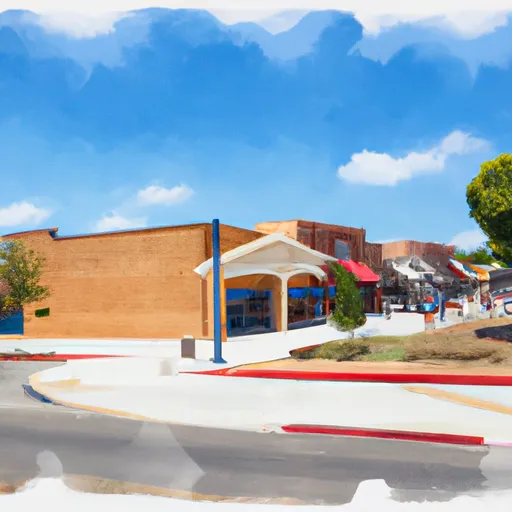-
 Snoflo Premium
Snoflo Premium
Get unlimited access to all our content
With no Ad interruptions! - Start Your Free Trial Login with existing account
Mira-Loma
Eden Index
Climate
9.1
•
Recreation
4.2
•
Community
3.3
•
Safeguard
5.9/10

Mira Loma is a small community located in Riverside County, California. It experiences a Mediterranean climate characterized by hot, dry summers and mild, wet winters. Summers can be scorching with temperatures reaching over 100°F (38°C), while winters are generally cool with temperatures ranging from 40°F to 60°F (4°C to 15°C). The region receives limited rainfall, averaging around 12 inches per year, primarily occurring during the winter months.
Hydrologically, Mira Loma is influenced by the Santa Ana River system, which flows nearby. The Santa Ana River acts as a vital water source for the area and provides opportunities for activities like fishing, kayaking, and hiking along its scenic trails. Additionally, Mira Loma is in close proximity to Lake Mathews, which supplies drinking water to the region and offers recreational activities such as boating, fishing, and picnicking.
Outdoor enthusiasts in Mira Loma can explore numerous recreational opportunities in the surrounding area. There are several parks and nature reserves nearby, including the Hidden Valley Wildlife Area, where visitors can observe diverse wildlife and enjoy hiking trails. For those seeking more adventure, nearby mountain ranges like the San Gabriel Mountains offer opportunities for hiking, camping, and skiing during the winter season.
Overall, Mira Loma's climate, proximity to water sources, and access to natural spaces make it an ideal location for outdoor recreation enthusiasts.
What is the Eden Index?
The Snoflo Eden Index serves as a comprehensive rating system for regions, evaluating their desirability through a holistic assessment of climate health, outdoor recreation opportunities, and natural disaster risk, acknowledging the profound impact of these factors on livability and well-being.
Climate Health Indicator (CHI): 9.1
Mira-Loma receives approximately
408mm of rain per year,
with humidity levels near 75%
and air temperatures averaging around
19°C.
Mira-Loma has a plant hardyness factor of
10, meaning
plants and agriculture in this region tend to thrive here all year round.
By considering the ideal temperature range, reliable water supplies, clean air, and stable seasonal rain or snowpacks, the Climate Health Indicator (CHI) underscores the significance of a healthy climate as the foundation for quality living.
A healthy climate is paramount for ensuring a high quality of life and livability in a region, fostering both physical well-being and environmental harmony. This can be characterized by ideal temperatures, reliable access to water supplies, clean air, and consistent seasonal rain or snowpacks.
Weather Forecast
Streamflow Conditions
Santa Ana
Area Rivers
Santa Ana
Snowpack Depths
Santa Ana
Reservoir Storage Capacity
Santa Ana
Groundwater Levels
Recreational Opportunity Index (ROI): 4.2
The Recreational Opportunity Index (ROI) recognizes the value of outdoor recreational options, such as parks, hiking trails, camping sites, and fishing spots, while acknowledging that climate plays a pivotal role in ensuring the comfort and consistency of these experiences.
Access to outdoor recreational opportunities, encompassing activities such as parks, hiking, camping, and fishing, is crucial for overall well-being, and the climate plays a pivotal role in enabling and enhancing these experiences, ensuring that individuals can engage in nature-based activities comfortably and consistently.
Camping Areas
| Campground | Campsites | Reservations | Toilets | Showers | Elevation |
|---|---|---|---|---|---|
| Upper San Juan | 18 | 1,761 ft | |||
| Blue Jay | 50 | 3,358 ft | |||
| El Cariso | 24 | 2,568 ft | |||
| Ortega Flats - Caspers Wilderness Co Park | None | 388 ft | |||
| ONeill Regional Park | 85 | 1,110 ft | |||
| Caspers Wilderness Park | None | 387 ft | |||
| Lake Elsinore | 400 | 1,286 ft | |||
| Wildomar | 11 | 2,456 ft | |||
| Live Oak - Caspers Wilderness Co Park | None | 387 ft | |||
| Prado Regional Park | 75 | 553 ft |
Catastrophe Safeguard Index (CSI):
The Catastrophe Safeguard Index (CSI) recognizes that natural disaster risk, encompassing floods, fires, hurricanes, and tornadoes, can drastically affect safety and the overall appeal of an area.
The level of natural disaster risk in a region significantly affects safety and the overall livability, with climate change amplifying these risks by potentially increasing the frequency and intensity of events like floods, fires, hurricanes, and tornadoes, thereby posing substantial challenges to community resilience and well-being.
Community Resilience Indicator (CRI): 3.3
The Community Resilience Indicator (CRI) recognizes that education, healthcare, and socioeconomics are crucial to the well-being of a region. The CRI acknowledges the profound impact of these elements on residents' overall quality of life. By evaluating educational resources, healthcare accessibility, and economic inclusivity, the index captures the essential aspects that contribute to a thriving community, fostering resident satisfaction, equity, and social cohesion.

